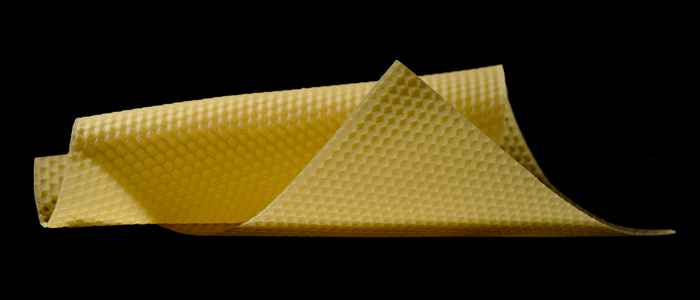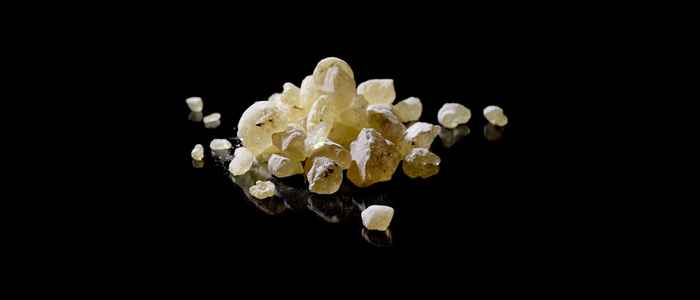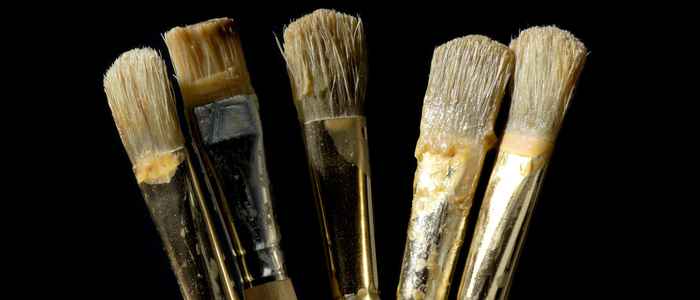Background information
The lining of canvas paintings is a remedial conservation method meant to consolidate weakened canvas and raised or flaking paint. This was done by attaching a new canvas to the original one and impregnating paintings structure with adhesive by means of heat and pressure from a hot hand-held iron or a heated vacuum lining table. The adhesives used for this purpose vary depending on for instance when and where the lining takes place. In the Netherlands, since the middle of the nineteenth-century, paintings have been lined with an adhesive mixture composed of beeswax and natural resins. The method was invented in the Netherlands and for this reason is commonly called the “Dutch method”.
Until the 1970’s wax-resin lining was considered as an overall remedy and consequently about 90% of the canvas paintings preserved in the Netherlands today have been subjected to this method of treatment. The method quickly disseminated throughout Europe and in 1911 it was brought to the United States by the Dutch restorer Carel de Wild (1870-1922) who had moved to New-York in that year. At the beginning of the 1970’s research into the consequences of wax-resin lining for the condition and conservation of paintings exploded in scale. The results revealed problematic issues including color changes, increased sensitivity of paint layers to solvents and warmth, as well as changes in surface texture. In 1974, a moratorium on the wax-resin technique was called. Since then use of the technique has declined and alternative methods were developed especially due to Vishwa Mehra’s research in the 1970 in Amsterdam.
Today wax-resin lining is rarely used. Nevertheless, painting conservators world-wide are confronted with the conservation of paintings that were wax-resin lined in the past. Restorations now take place while full insight into the effects of past lining on the material and physical characteristics of paintings is lacking. This is due to large lacunas in scientific research performed regarding the overall consequences of the technique for the present state of paintings. The research carried out within the Amsterdam Wax-Resin Project aims to fill this gap.
Objectives
The Amsterdam Wax-Resin Project aims to:
- Centralise existing knowledge and create new knowledge on the history of wax-resin linings, the effects of the treatment on the material and physical characteristics of paintings, as well as the consequences thereof for conservation practice.
- Create new knowledge on the history of wax-resin linings, the effects of the treatment on the material and physical characteristics of paintings, as well as the consequences thereof for conservation practice.
- Develop strategies for the conservation and restoration of wax-resin lined paintings.
- Share with students and professionals in the field of conservation the work of the research group through presentations, publications, a digital platform, and workshops.
- Establish the leadership of the conservation-restoration program of the University of Amsterdam for research related to the conservation of wax-resin lined paintings.
Societal relevance
Paintings are artefacts of cultural heritage. The ones that were considered worthy of being preserved for future generation owed this good fortune to the specific values society attached to them. The intangible values of paintings are manifested through their materiality. It is the conservator’s task to preserve the materiality of cultural objects such that their societal significance can be passed on to next generations.
For more than a century, wax-resin linings have been carried out on a significant portion of paintings in Dutch collections, some of which belong to the top segment of our Dutch cultural heritage. From around 1910 the technique spread across the globe and reached the United States, Canada, Japan, Russia, and India. In these countries too, paintings of very high value were subjected the treatment. Furthermore, in few places including Mexico, even today wax-resin linings are still implemented on paintings on a daily basis. It is essential to develop awareness among students and professionals in conservation regarding the drawbacks of wax-resin lining of paintings and its problematic consequences for conservation.
Contact
Organisation: Emilie Froment and Melissa Daugherty (assistant)





